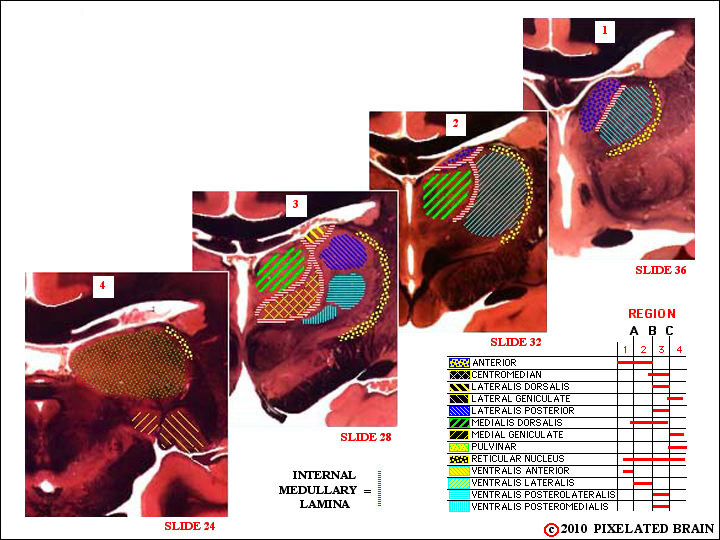MODULE 14 - SECTION 3 - THE NUCLEI of the DORSAL THALAMUS
Different authors classify the thalamic nuclei in slightly different ways. The listing below is in general agreement with the one given in Blumenfeld's Table 7.3 but differs in minor details. Using the common abbreviations for the nuclei, the situation can be summarized as follows:
THE RELAY NUCLEI
VPL, VPM, MGN, LGN - these relay sensory information from the periphery to the appropriate cortical receiving area.
A, MD - these relay information to the cortex from limbic structures in the hypothalamus and temporal lobe.
All the above nuclei have well defined input pathways from other subcortical areas and do indeed seem like relay structures. The remaining three nuclei of this group, LD, LP, and PULV are a bit different. Their input pathways are not obvious, anatomically, and in most instances the input arises in the cortex. So, even though some authors call them relay nuclei, the term seems a little misleading.
ASSOCIATION NUCLEI
Some classification schemes group MD, LP, LD and PULV together as association nuclei. The rationale is that these nuclei all project to cortical association areas, regions of the cortex that receive, indirectly, information relating to more than one sensory modality. These areas are thought to play some sort of integrative role.

THE RELAY NUCLEI
VPL, VPM, MGN, LGN - these relay sensory information from the periphery to the appropriate cortical receiving area.
VA, VL - these nuclei are part of subcortical loops that are concerned with motor function. VA relays information back to the cortex from the basal ganglia and VL does a similar job for the cerebellum.